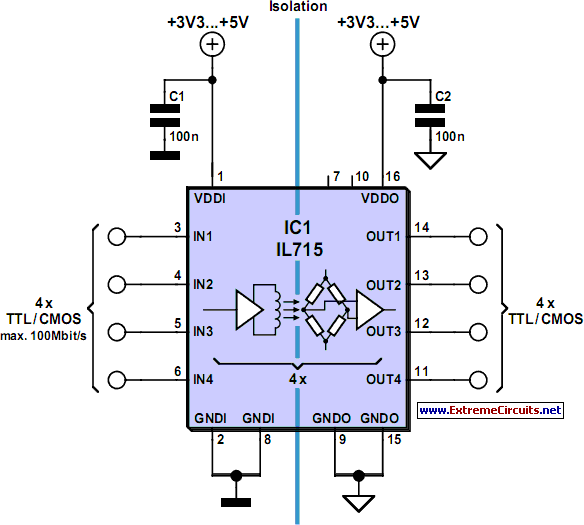Home » Circuits
Digital Isolation up to 100 Mbits
When it is necessary to send a digital signal between two electrically isolated circuits you would normally choose an optoisolator or some form of transformer coupling. Neither of these solutions is ideal; optocouplers run out of steam beyond about 10 MHz and transformers do not have a good low frequency (in the region of Hertz) response. The company NVE Corporation (www.nve.com) produces a range of coupler devices using an innovative ‘IsoLoop’ technology allowing data rates up to 110 Mbaud. The example shown here uses the IL715 type coupler providing four TTL or CMOS compatible channels with a data rate of 100 Mbit/s. Inputs and outputs are compatible with 3.3 V or 5 V systems. The maximum isolation voltage is 2.5 kV and the device can cope with input transients up to 20 kV/µs.Circuit diagram:
The company produce many other configurations including bidirectional versions that would be suitable for RS485 interfacing. The IsoLoop coupler is based on relatively new GMR (GiantMagnetoResistive) technology. The input signal produces a current in a planar coil. This current generates a magnetic field that produces a change in resistance of the GMR material. This material is isolated from the planar coil by a thin film high voltage insulating layer. The change in resistance is amplified and fed to a comparator to produce a digital output signal. Differences in the ground potential of either the input or output stage will not produce any current flow in the planar coil and therefore no magnetic field changes to affect the GMR material. Altogether the circuit provides a good electrical isolation between input and output and also protects against input signal transients (EMV).
Author: Gregor Kleine - Copyright: Elektor July-August 2004

